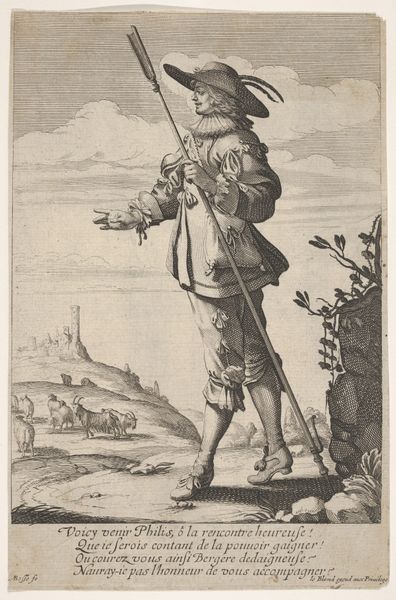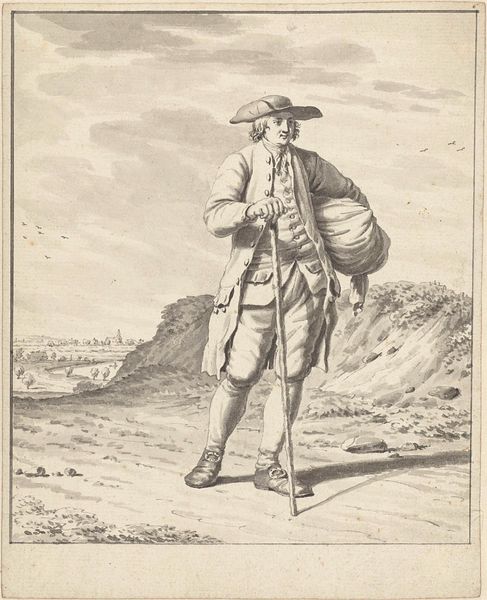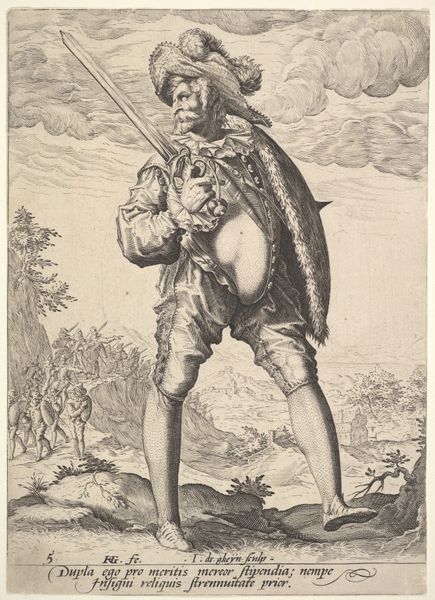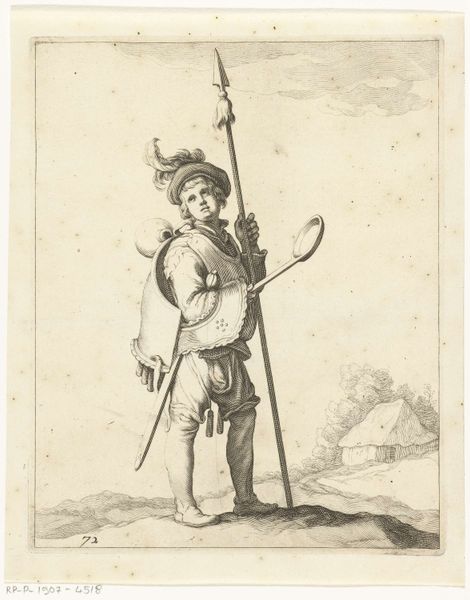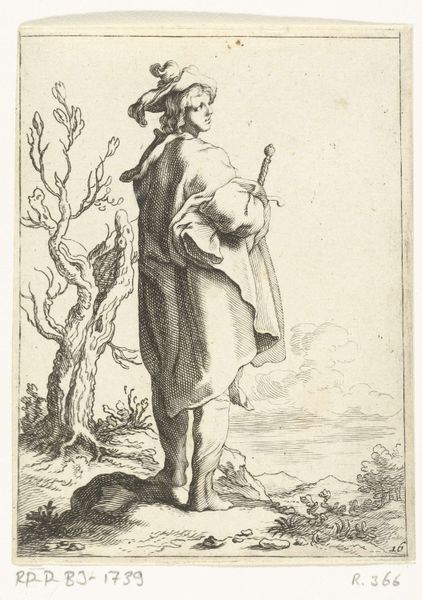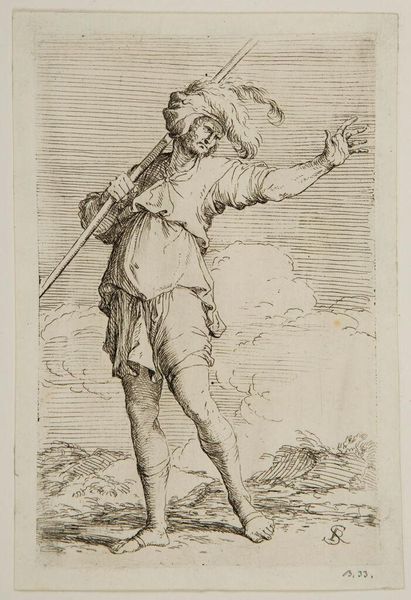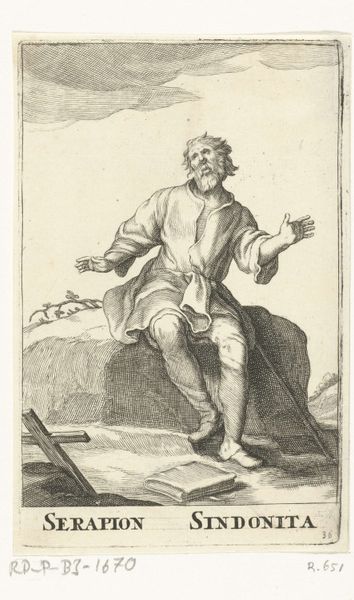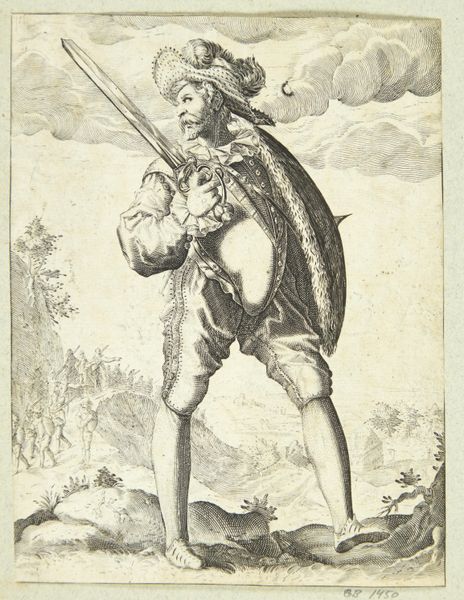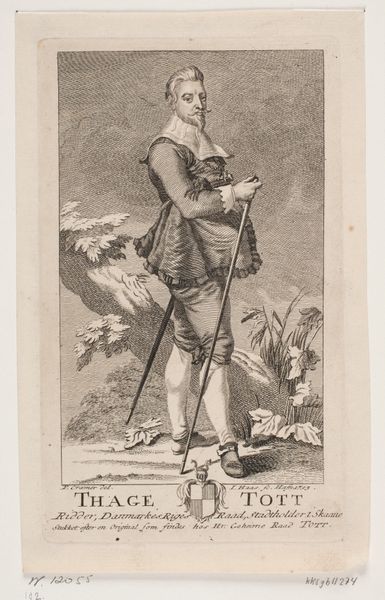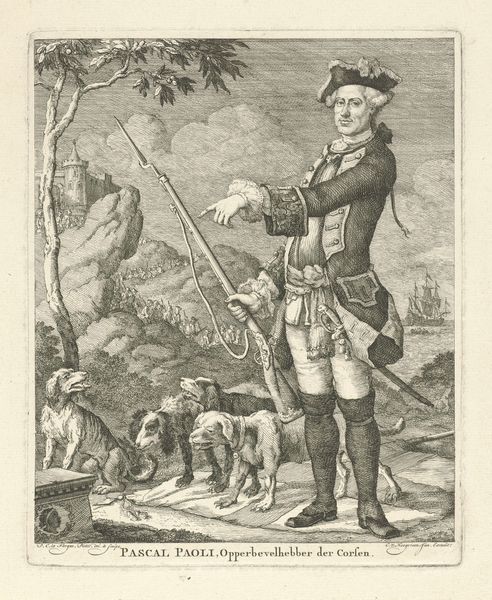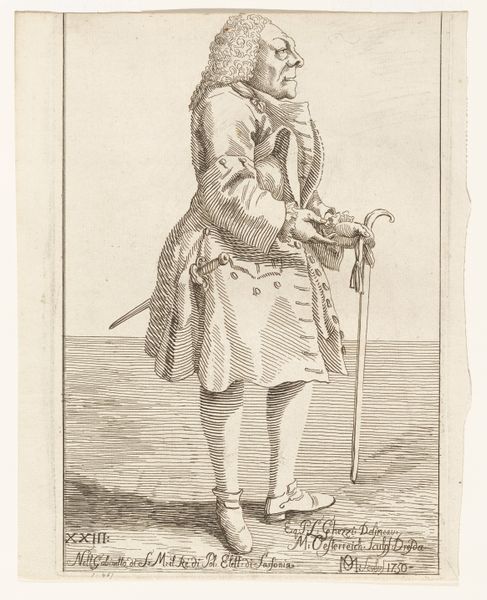
print, engraving
#
baroque
# print
#
old engraving style
#
landscape
#
figuration
#
history-painting
#
engraving
Dimensions: height 135 mm, width 85 mm
Copyright: Rijks Museum: Open Domain
Frederick Bloemaert made this print of Saint Serapion of Arsinoe sometime in the 17th century. Serapion, an Egyptian peasant, gave away all his possessions and became a wandering beggar. The image presents the saint, dressed in simple robes and holding a scythe. But why would Bloemaert, living in the Dutch Republic, depict an early Christian monk in this way? The answer lies in the culture of the Dutch Republic, a Protestant country that nevertheless valued religious imagery. Prints were a popular and affordable way to spread religious ideas and stories. The representation of Serapion as a peasant labourer also speaks to the evolving social values of the time, in which a greater emphasis was placed on hard work and individual piety, even among the humblest members of society. By studying the history of religious printmaking in the Netherlands, using resources like period publications and the Rijksmuseum's own collection catalogues, we can better understand how images like this one contributed to the religious and cultural landscape of the time.
Comments
No comments
Be the first to comment and join the conversation on the ultimate creative platform.
